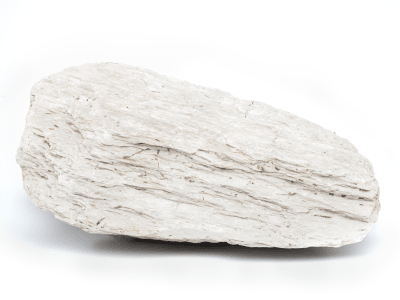Soapstone, also known as steatite, refers to compact masses of talc and other minerals known for their soapy or greasy texture. Due to its softness, it has been used since ancient times for carvings, ornaments and utensils.
General Information
Common Name
Soapstone
Species
Talc
Transparency
Opaque-Semitranslucent
Dispersion
Strength: None
Refractive Index
1.540-1.590
Tolerance:(+0.010/-0.002)
Tolerance:(+0.010/-0.002)
Birefringence
0.046- 0.050
Optic Character
Biaxial
Optic Sign
Negative
Polariscope Reaction
Aggregate (AGG)
Fluorescence
SWUV: Inert to yellow, pink or greenish
LWUV: Inert to weak pink, yellow or greenish yellow
LWUV: Inert to weak pink, yellow or greenish yellow
CCF Reaction
None
Pleochroism
None
Hardness
1-2.5
Streak
White
Specific Gravity
2.200-2.800 Typical:2.750
Toughness
Poor
Inclusions
Soapstone is often veined or mottled in appearance and are greasy or soapy to touch. Stones are very soft can be scratched with a fingernail and might show surface damage.
Luster
Waxy, Dull, Pearly, Greasy
Fracture
Uneven
Cleavage
Perfect, in one direction
Chemical Name
magnesium silicate hydroxide
Chemical Formula
Mg3Si4O10(OH)2
Crystal System
Monoclinic
Chemistry Classification
Silicate
Soapstone Colors
-
 Brown
Brown -
 Colorless
Colorless -
 Gray
Gray -
 Green
Green -
 Multi-color
Multi-color -
 White
White -
 Yellow
Yellow
Alternate Names
Steatite, Talc, Saponite
Countries of Origin
Russian Federation; Czechia; United States of America; Madagascar; Kenya; United Kingdom of Great Britain and Northern Ireland; Portugal; India; New Zealand; Canada; Austria; Unknown; Norway; China; Finland; Brazil; Poland; Italy; Australia; France; Lithuania; Germany
Care
Soapstone is easily scratched. If the soapstone has been heated it can obtain a mohs hardness between 5.5-6.5.

